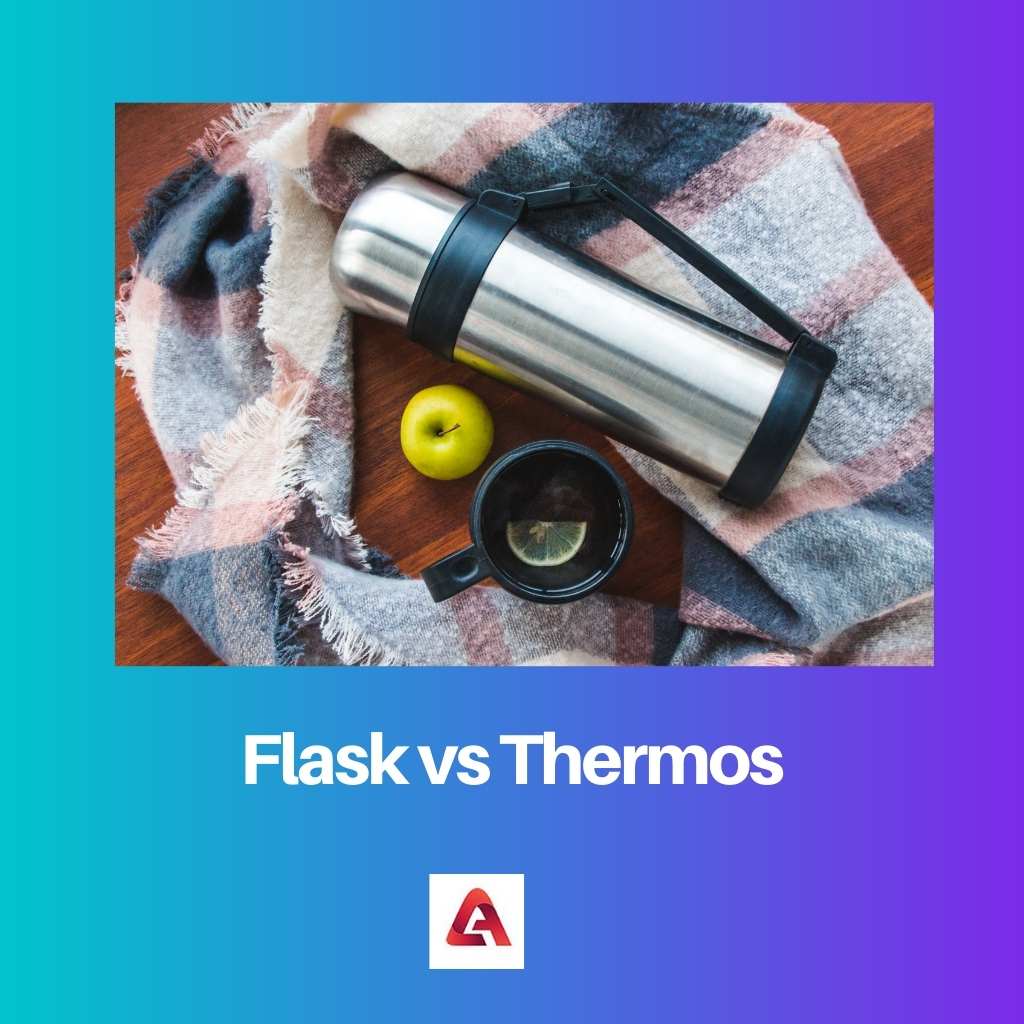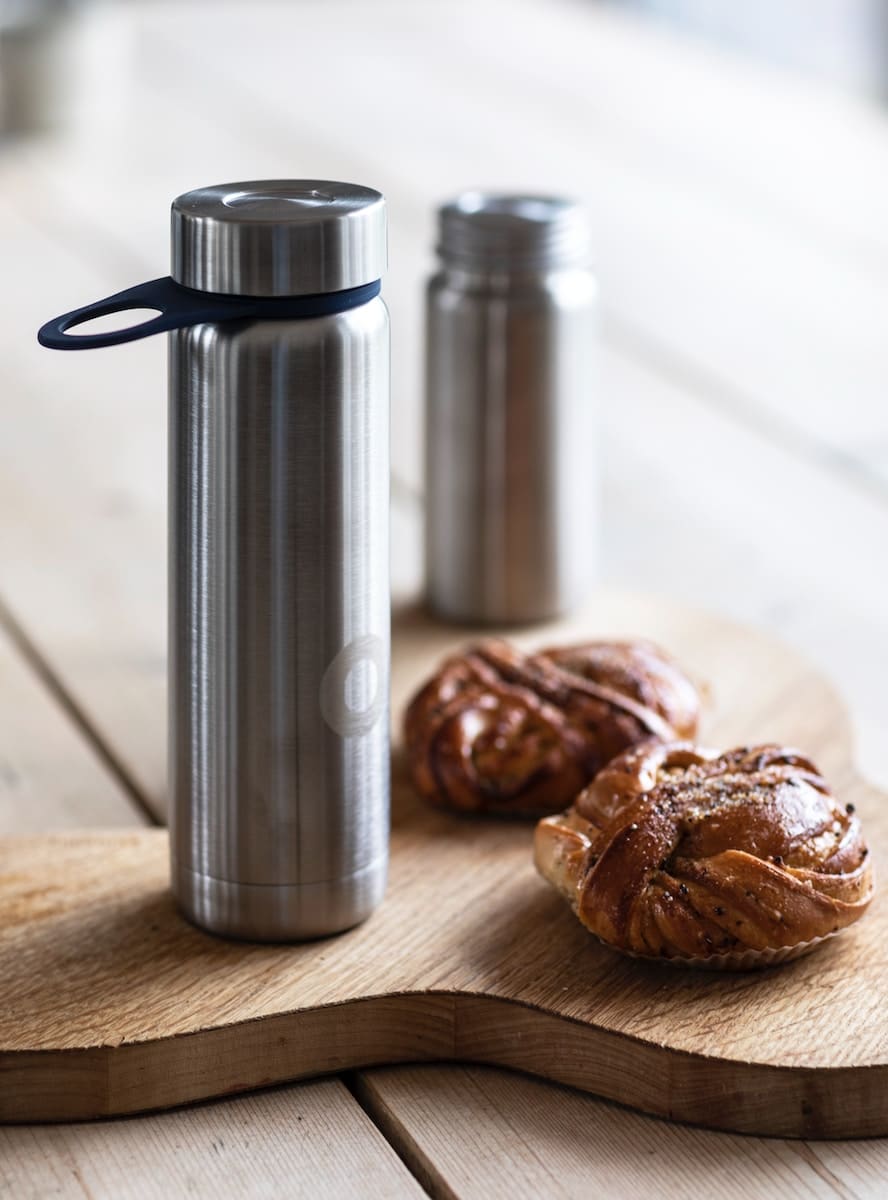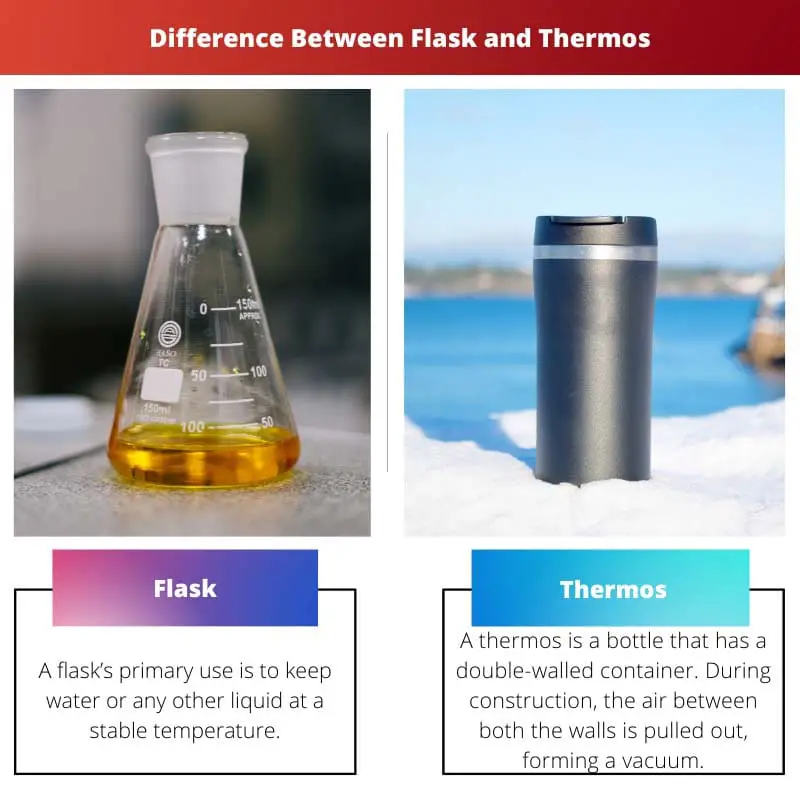Having an enclosed, stainless steel container gives an easy method to keep your drinks cool and keep a record of your fluid intake, whether you merely prefer to remain hydrated or you’re constantly on the go.
These bottles are now more common than ever, with many individuals preferring insulated steel bottles to plain plastic bottles.
Key Takeaways
- A flask is a small container for carrying hot or cold drinks, while a thermos is a vacuum flask that can keep drinks hot or cold for an extended period.
- A flask is made of metal or plastic and has a screw-top lid, while a thermos is made of glass or stainless steel and has a vacuum-sealed lid.
- A thermos is more effective at maintaining the temperature of the contents than a flask and is suitable for outdoor activities such as camping and hiking.
Flask vs Thermos
A flask is a small, portable container that is made of stainless steel or other durable materials. Flasks are designed to hold a small amount of liquid, such as coffee, tea, or alcohol. A thermos is a larger container designed to keep larger amounts of liquid hot or cold for longer periods. Thermoses are made of double-walled, vacuum-insulated stainless steel.

A thermos is similar to a vacuum-sealed container. An inside glass chamber and an exterior plastic chamber make up a conventional thermos.
There is a vacuum between both layers. A reflective metal coating is used to line the inside glass casing. Lastly, the top of the flask has a tight, screw-down cap.
The combination of these basic properties effectively eliminates any heat transfer via conduction, radiation, or convection.
A flask is a narrow-necked metal or glass container useful for a variety of applications. It’s also a vessel for transporting a tiny amount of a strong alcoholic beverage secretly.
In the scientific world, the flask is laboratory glassware utilized to keep higher quantities than test tubes, possessing a narrow mouth of a regular size that broadens to a flat or spherical bottom.
Comparison Table
| Parameter of comparison | Flask | Thermos |
|---|---|---|
| Used for | Carrying or storing substances, or heating water. | Maintaining the temperature of fluids. |
| Material | Glass or metal. | The inside chamber is made of glass and the outside of plastic. |
| Structure | Narrow necked. | Structure of bottle. |
| Nature | Flask is a genus, having various types. | Thermos is the species i.e., a type of flask. |
| Vacuum | A vacuum doesn’t need to be created. | It works by way of a vacuum created inside the bottle. |
What is a Flask?
A flask’s primary use is to keep water or any other liquid at a stable temperature.
A flask can hold hot water at a steady temperature for a minimum of 10 hours and a peak of 12 hours in most instances. A flask, on the other hand, can keep cold water at a consistent temperature for a minimum of 6 hours and up to 10 hours.
While we use flasks to retain our beverage hot, James Dewar designed them in 1892 to hold things very cold.
Dewar was fascinated by cryogenics or the study of extreme cold, and in 1898 he became the first individual to create liquid hydrogen, the coldest element ever created at the time.
Flasks are also containers or vessels that belong to the glassware category of lab equipment. They are commonly referred to as flasks in laboratories and other scientific situations.
Flasks vary in a variety of shapes and sizes, but they all have a broad vessel “body” and one, or occasionally more, narrower tubular pieces at the top termed necks, that have an incision at the top.
Fill a vacant, dry flask halfway with baking powder and pour water from an already boiled kettle on it to cleanse the sensitive and difficult-to-reach insides of flasks discolored by coffee or tea.
When all of the bubbles have settled, cap it and set it aside for about a half-hour. If required, repeat the process.

What is Thermos?
A thermos is a bottle that has a double-walled container. During construction, the air between both the walls is pulled out, forming a vacuum. A thermos is built to maintain hot things hot by not letting heat exit, rather than having a heating source.
Heat can be transmitted from one place to another via the air. Insulation is required to prevent heat from flowing. Since there is no air, the ideal insulator is a vacuum.
Heat is held where it is and where you want it i.e. in your food — if there is no air to transmit it.
In the same way, a thermos keeps cold things cool. It isn’t equipped with a cooling system. Cold things are kept cold by the same vacuum that maintains hot things hot.
Due to the obvious vacuum between the thermos walls, heat that would otherwise travel to the cold components of the thermos is avoided.
The thermoses of today are far more durable than those of the past. Metal exteriors with glass inside walls were the first thermoses. When these thermoses were dropped, they were frequently broken.
Modern thermoses are constructed of multiple layers of plastic to assist prevent heat transfer. Styrofoam coatings in certain thermoses help to restrict heat transfer even further.

Main Differences Between Flask and Thermos
- A flask is used for carrying or storing substances, or for heating water while a thermos is used for maintaining the temperature of fluids.
- A flask is made up of glass or metal while a thermos has an inside chamber made of glass and an outside chamber made of plastic or steel.
- Flask has a narrow-necked structure while the structure of the thermos is like a bottle only.
- A flask is the genus and is of various types while a thermos is a species or type of flask.
- A flask does not require a vacuum to work while a thermos creates a vacuum inside the bottle to fulfill its purpose.



